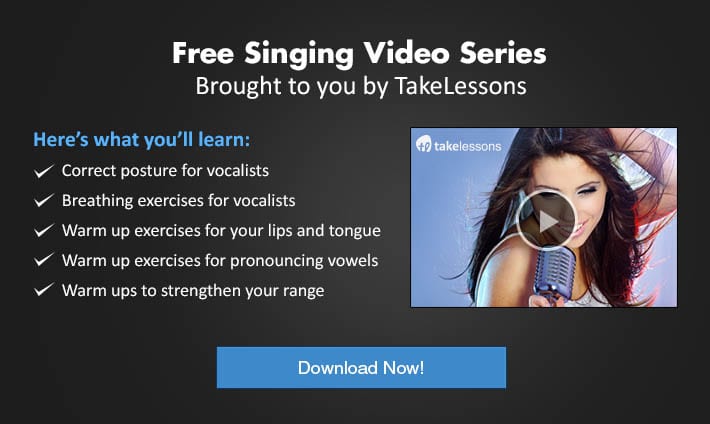Want to help your child become a better singer or musician? Beatboxing may not be the first thing that comes to mind, but you’d be surprised at how learning this skill can supplement your child’s music lessons. Learn more in this guest post…
Musicianship is a funny thing. Whether trained in jazz, opera, classical, or soul, you can bet your bottom dollar that there are a range of techniques and tricks you would have never expected to be of help in boosting your child’s budding musical skill. One of these techniques is beatboxing.
Yes, beatboxing: an a cappella style of music-making via vocal percussion. Beatboxing not only teaches your child a greater sense of timing and rhythm, it also improves listening skills and can actually work to strengthen and protect his or her vocal cords. What’s more, it will widen your child’s musical scope, which will improve creativity and overall musicianship.
What is beatboxing, most people think of a street performer making noise with their mouth. But there’s more to it than that. Beatboxing is actually a great way to improve your musical skills and creativity.
Here are some benefits of beatboxing that you may not have known about.
Is Beatboxing a Talent?
The art of beatboxing–or creating rhythms and sounds using only the mouth–has been around for centuries – and it’s a talent! It offers the following benefits:
- It requires no special equipment or training – all that is needed is a good set of lungs and a bit of creativity.
- Some people may be naturally inclined towards beatboxing, it is also a skill that can be learned with practice.
- That said, it takes time and effort to become good at beatboxing.
So what is the verdict? Is beatboxing a talent or a skill? In truth, it is both. Beatboxing requires both natural ability and practice to master. But regardless of how you look at it, there is no doubt that beatboxing is an impressive feat–and one that is sure to entertain audiences for years to come.Consider signing up – or signing your child up – for beatboxing lessons! Check out this tutorial to learn a bit more about how to beatbox:
https://www.youtube.com/watch?v=_K_k6aLv3Nc
How Do You Beatbox?
A lot of people think that beatboxing is all about making noises with your mouth, but it’s actually much more than that. To be a good beatboxer, you need to have a strong sense of rhythm and timing, and you need to be able to control your breath. You also need to know how to use your tongue and lips to create different sounds.
There are a few different techniques that you can use to create beats. One popular technique is called the “boom bap.” This involves making a quick series of short “p” sounds, followed by a longer “b” sound. You can also use your tongue to create bass lines or “wobbles.” And, of course, you can always just make noise with your mouth however you want!
The best way to learn how to beatbox is to listen to other beatboxers and mimic what they’re doing. There are also a number of websites and YouTube videos that can teach you the basics. Once you get the hang of it, you can start experimenting and coming up with your own unique style.
Benefits of Beatboxing: Why You Should Learn How to Beatbox
Here’s a quick breakdown of why learning to beatbox can help young musicians get on top of their musical game:
1. Aural Skills and Improvising
You can’t learn to beatbox from sheet music; you need to be able to listen and repeat in a ‘copycat’ style — training your mind to get used to the way the sounds can work together. Eventually, the goal is to be able to improvise using the sounds you’ve learned to make. Being able to improvise relies almost completely on strong aural skills, and the best way to strengthen them is through the same sort of ‘listen-and-repeat’ style of exercises, precisely what children will learn when they try their hand at beatboxing.
2. Rhythm and Timing
Beatboxing is essentially a way of creating a sequence of different rhythms, which play off each other to create a complicated, yet logical, sequence of beats. To pull this off, musicians need a pretty firm understanding of musical timing and how different rhythmic and percussive sounds can combine to create a particular effect. Having a strong sense of rhythm and being able to play to complicated time signatures will be a necessity as your child becomes a more developed musician — no matter what style or instrument they’re learning.
For instance, jazz musicians need a strong handle on syncopation, a way of playing unexpected rhythms that are sometimes off-beat. Learning how to create fast, complicated rhythms from sequences of quick, improvised beats will boost your child’s technical prowess and confidence over difficult passages. Plus, being able to move in time to a steady beat is also linked to stronger language and reading skills.
3. Breath Control
Being able to breathe properly is essential to beatboxing. For singers and woodwind players, having good breath control is just as important. When you beatbox, you need to know how to command breath to produce different types of sounds, from a higher ‘hi-hat’ sound to a bass drum. There’s also the need to have enough breath to carry on with the performance, which means your child will need to learn how to incorporate breath into the beat itself.
For vocalists, strong breath control is one of the most important factors in controlling your voice. Whether belting out a gospel tune or shattering glass with a powerful aria, they’ll need to know exactly the amount of breath that’s required to create the tone and sound they want. How young musicians learn to exhale will alter the quality of the sound, volume, pitch, and tone of their voice; so learning how to manipulate it as a beatboxer will increase control over their range. It’s the same principle for woodwind players: different types of exhaled breath will resonate differently through the instrument, each bringing out a different sound and tone.
4. Protecting the Vocal Cords
As well as the benefits for your child’s capabilities as a musician, beatboxing can actually help strengthen and protect the vocal cords. When you sing, you rely almost entirely on your vocal cords to produce sound, which — when overused — can lead to the development of scar tissue. However, beatboxers use their entire vocal tract to create different sounds, which spreads energy across different structures, therefore minimizing strain on one particular area. Muscles used when beatboxing work to elongate the vocal tract, which can also help singers reach higher notes.
5. It’s Artistic and Can Increase Creativity Levels
Beatboxing can be a fun and creative activity for children of all ages. By imitating the sounds of drums and other instruments, children can learn to create their own rhythmic patterns.
Additionally, beatboxing can help children to develop their vocal skills and improve their ability to communicate. As children experiment with different sounds and rhythms, they will learn to think creatively and to express themselves in unique ways. In addition to being a fun activity, beatboxing can thus help to increase your child’s creativity levels.
Is Beatboxing Harmful?
Despite all of its benefits, when done incorrectly, beatboxing can sometimes be harmful to the vocal cords. This is because it requires making a lot of short and high-pitched sounds in quick succession, which can put extra strain on the voice box and larynx.
In addition, breathing patterns are disrupted when one performs beatboxing, which can interfere with normal airflow for speaking and singing.
Despite these potential risks, many experts argue that beatboxing is not inherently harmful if performed safely and properly.
With good technique and careful practice, it is possible to minimize any harm that may be caused by this musical art form.
So while some caution is certainly warranted when considering whether or not to engage in beatboxing, it should not necessarily be discouraged outright as a dangerous activity. Indeed, when done properly, there may even be some health benefits associated with this intriguing style of music-making!
Is Beatboxing a Challenge?
Yes, beatboxing can be a challenge. The beatbox challenge vocal technique involves producing drum sounds and other musical elements using only your voice, which means that it requires exceptional control and precision.
In order to create different sounds and create an effective beat, you must have a strong sense of rhythm and timing, as well as the ability to quickly respond to changes in the tempo and structure of a piece.
Plus, learning how to effectively use breath control is critical for creating the necessary resonance and depth in your beats.
So if you are looking for a challenge in your musical pursuits, then beatboxing may be the perfect option for you. With dedication and hard work, you can become an accomplished beatboxer – mastering this unique art form takes skill and talent!
How to Learn Beatbox? Start Here!
The best thing about beatboxing is that you first learn by copying. While it’s always easiest to be led by a tutor who knows what they’re doing, there are plenty of video tutorials online to help your child get his or her head around beatboxing before formally heading in for a lesson.
Your child will typically start to learn to beatbox by learning how to make percussion sounds like a drum kit. For instance, they’ll be able to mimic sounds of hi-hat cymbal, the tom-tom, and bass drum, and learn how to put them together to make basic beats. As they get better, they’ll learn more complex sounds to add to the mix.
Beatboxing can not only make you a better singer, but it also has some great health benefits. If you’re looking to improve your voice and get in shape, start beatboxing today and consider how the benefits of beatboxing can make you a better vocalist.
We hope these tips have helped inspire you to try out this fun and unique form of vocal training. What are you waiting for? Start beatboxing – and sign up for singing lessons to round out your training – now!
 Monica Karpinski is a staff member at Ingenium Academy, a summer music program for talented young musicians around the world, aged 14-18. All students are taught beatboxing, regardless of style, previous training, or instrument they play.
Monica Karpinski is a staff member at Ingenium Academy, a summer music program for talented young musicians around the world, aged 14-18. All students are taught beatboxing, regardless of style, previous training, or instrument they play.
Photo by Eoin C
Suzy S.

